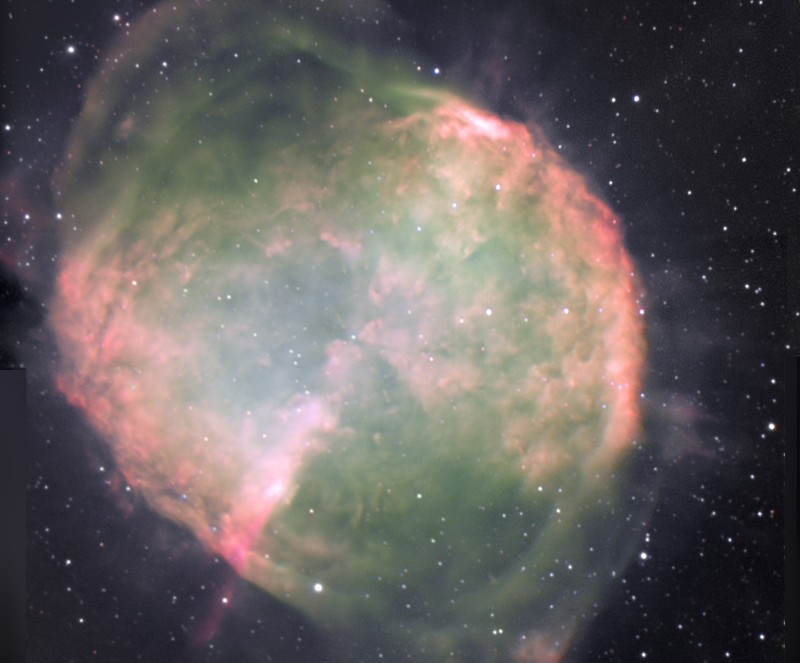 |
Астронет: Астрономическая картинка дня M27: это не комета http://variable-stars.ru/db/msg/1228544/eng |
Credit & Copyright: Nik Szymanek,
w/Faulkes Telescope North
Explanation:
Born on June 26th in 1730,
astronomer Charles Messier scanned 18th century French skies
for comets.
To avoid confusion and aid his comet hunting, he
diligently recorded this object as number 27 on
his
list of things which are definitely not comets.
In fact, 21st century astronomers would classify it as a
Planetary
Nebula, but it's not a planet either, even though it may
appear round
and planet-like in a small telescope.
Messier 27 (M27) is now
known to be an excellent example of a
gaseous emission nebula created
as a sun-like star runs out
of nuclear fuel in its core.
The nebula forms as the star's outer layers are expelled into
space, with a visible glow generated by atoms excited by the dying
star's intense but invisible
ultraviolet light.
Known by the popular name of the
Dumbbell
Nebula, the beautifully
symmetric interstellar gas cloud is over 2.5 light-years across and
about 1,200 light-years away in the
constellation
Vulpecula.
This impressive color composite highlights subtle jet
features in the nebula.
It was recorded with a robotic
telescope sited in Hawaii using narrow band
filters sensitive to emission from oxygen atoms (shown in
green) and hydrogen atoms.
The hydrogen
emission is
seen as red (H-alpha) and fainter
bluish hues (H-beta).
Authors & editors:
Robert Nemiroff
(MTU) &
Jerry Bonnell
(USRA)
NASA Web Site Statements, Warnings,
and Disclaimers
NASA Official: Jay Norris.
Specific
rights apply.
A service of:
LHEA at
NASA /
GSFC
& Michigan Tech. U.
